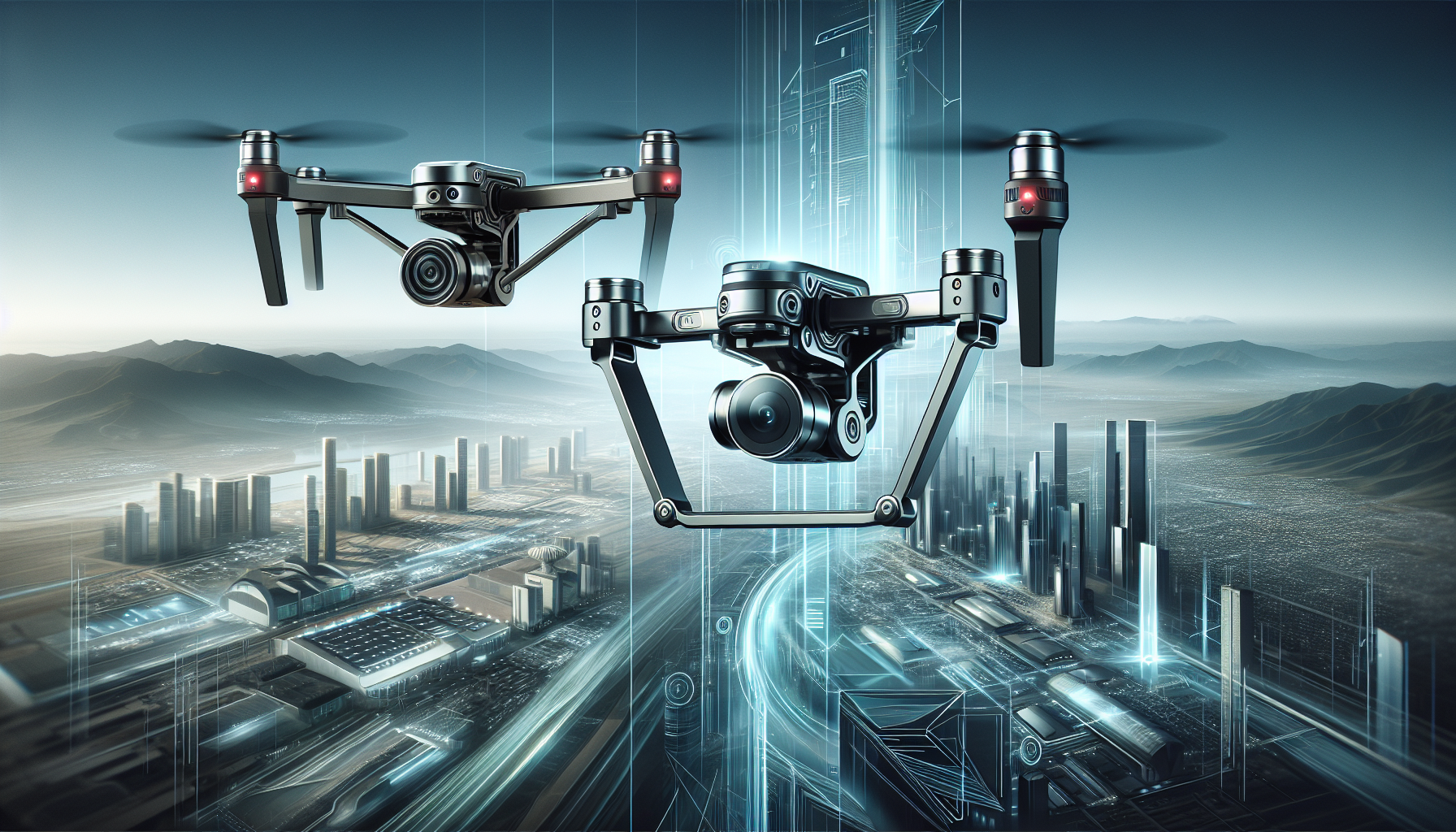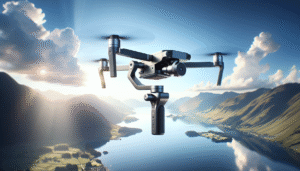Have you ever wondered which gimbal would be your perfect companion for drone video in 2025? You’re not alone. With the rapid advancement of technology and the ever-increasing popularity of drone videography, choosing the right gimbal can make all the difference in your footage. So let’s chat about it: the DJI RS 3 and RS 4. Which one should you go for? As we navigate this detailed comparison, I’ll help you unravel the intricacies of each, so by the end, you can decide which is best for you—like choosing between double chocolate chip or classic vanilla ice cream, but with more technology and fewer calories.

A Quick Gimbal Overview
Gimbals are essential tools for stabilizing your video footage. If you’ve ever strapped a camera to a drone and attempted to achieve buttery-smooth shots, you’ll appreciate the magic of these devices. Essentially, gimbals use motors and smart sensors to stabilize your camera, eliminating any distracting shakes or jittery footage.
The Role of Gimbals in Drone Videography
Why is stabilization so crucial? Imagine filming a serene landscape and capturing every detail without a hitch. This magic happens thanks to gimbals. They allow for the fluid movement that turns amateur footage into professional-grade content. With drones soaring high, navigating winds and fluctuating altitudes, a gimbal ensures that your camera remains steady.
DJI: The Trusted Name in Gimbals
Before we dive into comparing the RS 3 and RS 4, it’s important to recognize DJI’s role in the field of gimbals. Their commitment to innovation has made them a go-to brand for videographers worldwide. With each model, they bring cutting-edge technology that raises the bar for stabilization equipment.
Why Choose DJI?
DJI isn’t just a brand; it’s practically a guarantee of quality in the realm of aerial videography. Their attention to detail and relentless pursuit of excellence mean that whichever gimbal you choose, it will be backed by years of research and development. Plus, there’s something comforting about choosing an established brand—you know they’re not just there to sell you a product; they’re there to support your creative endeavors.

Introduction to DJI RS 3 and RS 4
Now let’s get into the meat of this comparison: the RS 3 versus the RS 4. Both gimbals serve the same primary purpose, but they come with different features and capabilities.
DJI RS 3: Classic Reliability
Released a few years prior to its newer sibling, the RS 3 is akin to a seasoned performer in the world of gimbals. It’s known for its reliability and ease of use, making it a favorite among both enthusiasts and professionals.
DJI RS 4: The New Kid on the Block
Enter the RS 4. As the newer model, the RS 4 comes with upgrades and refinements that could potentially make it the darling of 2025. It’s like the RS 3, but with a bit more flair and a few more bells and whistles.
Key Features Comparison
It wouldn’t be fair to jump to conclusions without looking at the specifics. Here’s where we delve into a detailed comparison, breaking down the essential features and how they stack up against each other.
Design and Build Quality
- RS 3: Known for its robust yet lightweight design, the RS 3 is crafted with high-quality materials. It offers durability with minimal heft, making it optimal for prolonged use.
- RS 4: Upgrading on the RS 3, the RS 4 boasts a sleeker design with additional considerations for ergonomics. It’s slightly more compact, which can be a boon for those on the go.
Stability and Performance
- RS 3: Offers superb stabilization that’s more than adequate for most videography needs. It features a 3-axis motorized stabilization system, which provides solid support for various camera setups.
- RS 4: While it sticks with the 3-axis design, its motors are enhanced with the latest technology, offering slightly smoother performance even in more turbulent conditions.
Compatibility and Payload Capacity
- RS 3: Compatible with a variety of cameras, but it has a slightly lower payload capacity compared to the RS 4.
- RS 4: Built to handle heavier setups, it’s the perfect companion if you plan on expanding your camera gear or stepping up your videography game.
Battery Life
- RS 3: Offers adequate battery life that should suffice for most shooting sessions.
- RS 4: Enhancements in energy efficiency and battery technology give it a longer operational time, reducing the number of breaks you need to take for recharges.
User Interface and Controls
- RS 3: Features a straightforward interface that is friendly even to beginners, with easy-to-access controls.
- RS 4: While maintaining user-friendliness, the RS 4 introduces a more intuitive touchscreen interface, making adjustments more accessible on the fly.
Advanced Features
- RS 3: Comes with a set of advanced shooting modes and connections.
- RS 4: Takes those features further, adding some more advanced customization options for professionals who want to get the most out of their equipment.
| Feature | DJI RS 3 | DJI RS 4 |
|---|---|---|
| Design | Robust, lightweight | Sleeker, more compact |
| Stability | Excellent 3-axis | Enhanced 3-axis |
| Compatibility | Standard payload | Handles heavier setups |
| Battery Life | Adequate | Longer operational time |
| User Interface | Straightforward | Intuitive touchscreen |
| Advanced Features | Great set | Expanded capabilities |
Real-World Performance
No comparison would be complete without considering how these gimbals fare in real-world scenarios. After all, every spec sheet sounds promising until you’re out in the field—and nature decides to throw a tantrum.
In-Flight Stability
Both gimbals generally shine during aerial operations. The RS 4’s enhanced motors provide slightly more stability, particularly noticeable in challenging environments such as when faced with strong wind conditions. However, the RS 3 remains a reliable choice for most scenarios.
Usability Under Pressure
Operating under time constraints—or perhaps when capturing that perfect sunset shot—can be stressful. The RS 4’s touchscreen and better UI mean quicker adjustments. However, the RS 3’s familiar controls might be more reliable if you’re accustomed to its setup.
Adaptability to Different Cameras
Both gimbals offer impressive adaptability, supporting various camera models. The RS 4 edges out in handling heavier cameras without compromising stability. Yet, the RS 3 covers a broad range to easily fit most popular devices in circulations.
Longevity and Durability
Consider this an investment. While neither feels cheaply made, the RS 4, with its newer construction materials, suggests a longer life span before needing replacements or repairs.
Choosing Between the RS 3 and RS 4
So, how do you make that final decision? Here’s where personal preferences and specific needs come into play. Let’s talk through some scenarios that might help solidify your choice.
You’re A Seasoned Pro
If you’ve been filming for years and want a tool that can handle more complex setups, the RS 4 might suit you better. With its advancements, it’s designed to accommodate the growing demands of professional videographers.
You’re Just Starting
Conversely, if you’re dipping your toes into drone videography, the RS 3 is more forgiving. It’s easier to use and provides excellent performance without overwhelming you with features you might not immediately need.
Your Budget Considerations
Price is, of course, a critical factor in your choice. The RS 3, being an older model, often comes in at a lower price point than the RS 4, making it more budget-friendly for those not needing the latest in gimbal technology.
The Need for Advanced Features
Suppose you’re eager to experiment with various shooting modes and precise control settings. In that case, the RS 4, with its enhanced features, is a clear choice—an option preferred by those who like their tools as advanced as their vision.
Final Thoughts
In the end, both the DJI RS 3 and RS 4 are solid choices, each with unique strengths tailored to different users. Your task is to reflect on what matters most to you—is it having the latest and greatest, or is it sticking with proven reliability? Your decision will accompany you as you create stunning footage, capturing the world from angles only your drone can reach.
Remember, there’s no wrong choice here, only what fits best with your creative goals. Whichever gimbal you choose, the skies of 2025 will await you with endless possibilities for your next remarkable video.
![Best Gimbal For DJI Mini 4 Pro In 2025 [Top Picks + Quick Deals]](https://droneaperture.com/wp-content/uploads/2025/06/best-gimbal-for-dji-mini-4-pro-in-2025-top-picks-quick-deals-1-300x171.png)
![Top 5 Drone Gimbals For Cinematic Footage Under $500 [2025 Tested]](https://droneaperture.com/wp-content/uploads/2025/06/top-5-drone-gimbals-for-cinematic-footage-under-500-2025-tested-300x171.png)
